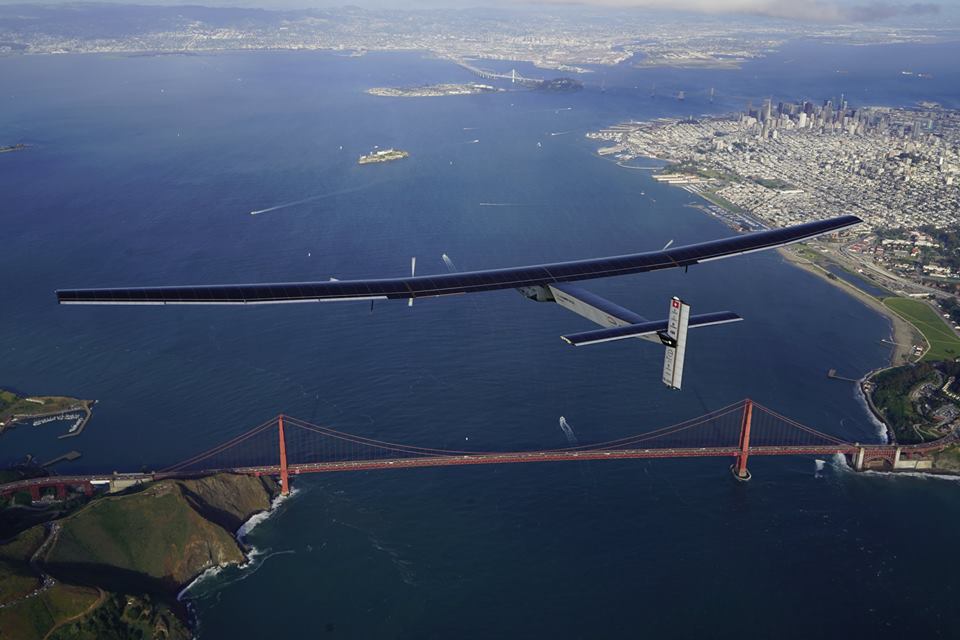 |
| Si2 & Bertrand Piccard above San Francisco. Photo: Space Impulse |
[Avionics Today 04-25-2016] Solar Impulse 2 (Si2), a solar airplane capable of flying day and night without using a drop of fuel, left Hawaii on April 21 at 6:15 a.m. local time and landed at the Moffett Airfield in California on April 23 at 11:44 p.m. local time, completing the crossing of the Pacific Ocean.
At the controls of Si2, Bertrand Piccard touched down at the Moffett Airfield after a flight of three days and two nights and 2,810 miles (4,523 km). The flight aims to breaking several world records — pending FAI approval — including distance, speed, duration and altitude in the electric airplane category, and altitude (gain of height) in the solar airplane category. André Borschberg completed the first part of the Pacific in a world-record flight of five days and five nights from Japan to Hawaii last July.
On April 22, on the occasion of Earth Day and the second consecutive day flying over the Pacific Ocean, Piccard spoke with United Nations Secretary-General Ban Ki-moon and 175 heads of states, directly from the cockpit of Si2, during a videoconference with the UN in New York for the signature of the Paris Agreement on Climate Change.
The flight from Hawaii to California was the ninth leg of the Round-The-World Solar Flight that will continue onward to New York, Europe or North Africa and Abu Dhabi in the United Arab Emirates where the adventure started in March 2015. By flying around the world with Si2, propelled solely by the energy of the sun, Piccard and Borschberg are aiming to make history with clean technologies.